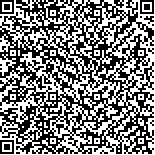陈林玲,殷秀梅,韩佳炜,等.基于JAK1/STAT3通路探讨电针“水沟”穴对脑梗死大鼠血管平滑肌细胞表型转化的影响[J].中华物理医学与康复杂志,2025,47(8):687-692
扫码阅读全文

|
| 基于JAK1/STAT3通路探讨电针“水沟”穴对脑梗死大鼠血管平滑肌细胞表型转化的影响 |
|
| |
| DOI:10.3760/cma.j.cn421666-20241209-00971 |
| 中文关键词: 脑梗死 电针 “水沟”穴 血管平滑肌细胞 表型转化 JAK1/STAT3信号通路 |
| 英文关键词: Cerebral infarction Electroacupuncture Vascular smooth muscle cells JAK1/STAT3 signaling pathway |
| 基金项目:国家自然科学基金(82074543,82105007) |
|
| 摘要点击次数: 707 |
| 全文下载次数: 610 |
| 中文摘要: |
| 目的 观察电针“水沟”穴对脑梗死大鼠大脑中动脉平滑肌细胞表型转化及Janus激酶1/信号转导子与转录激活子3(JAK1/STAT3)信号通路的影响,初步探讨电针治疗脑梗死的相关分子机制。 方法 将108只健康雄性Wistar大鼠随机分为空白组(6只)、假手术组(6只)、模型组(48只)及电针组(48只),将模型组及电针组大鼠制作成大脑中动脉栓塞(MCAO)动物模型,各组于造模后1 h、3 h、6 h、12 h、24 h、72 h、7 d及14 d时细分为8个时相亚组,每组6只大鼠。电针组大鼠于造模后按计划给予电针“水沟”穴干预,电针治疗时间为20 min。各组大鼠于对应时间点采用神经功能缺损量表(NSS)评估大鼠神经功能缺损情况;采用Western blot法检测各时相大鼠大脑中动脉受磷蛋白(PLN)以及脑组织JAK1、STAT3蛋白表达;采用ELISA法检测各时相大鼠大脑中动脉血小板衍生生长因子AA(PDGF-AA)含量。 结果 分别与空白组和假手术组比较,模型组和电针组NSS评分、PDGF-AA蛋白表达均显著增加(P<0.05),模型组PLN蛋白表达在术后12 h~14 d时均显著降低(P<0.05),电针组PLN蛋白表达在术后12 h~7 d时均显著降低(P<0.05),模型组JAK1蛋白表达分别在术后1 h~72 h、14 d时和3 h~6 h、24 h~72 h、14 d时显著增高(P<0.05),电针组JAK1蛋白表达分别在术后1 h~14 d和1 h~6 h、24 h、72 h、14 d时显著增高(P<0.05),模型组STAT3蛋白表达分别在术后6 h~14 d和3 h~14 d时显著增高(P<0.05),电针组STAT3蛋白表达在术后6 h~14 d时均显著增高(P<0.05);与模型组比较,电针组NSS评分在术后72 h、7 d、14 d时均明显降低(P<0.05),PLN蛋白表达在术后14 d时显著增高(P<0.05),PDGF-AA蛋白表达在术后6 h~7 d时均明显降低(P<0.05),JAK1蛋白表达在术后12 h、14 d时均明显降低(P<0.05),STAT3蛋白表达在术后12 h~72 h、14 d时均明显降低(P<0.05)。 结论 电针“水沟穴”可能通过调控促表型转化因子PDGF-AA表达及JAK1/STAT3信号通路功能,促使收缩表型标志性蛋白PLN正常表达,以维持大脑中动脉血管的正常舒缩状态,这可能是电针“水沟”穴改善脑梗死后神经功能缺损、治疗脑梗死的分子机制之一。 |
| 英文摘要: |
| Objective To observe the effect of electroacupuncture at the Shuigou point on systolic phenotype-related factors and on the JAK1/STAT3 signaling pathway of the middle cerebral artery smooth muscle cells in rats modeling cerebral infarction; and to explore the molecular mechanism of treating cerebral infarction with electroacupuncture. Methods A total of 108 healthy male Wistar rats were randomly divided into a blank group (n=6), a sham operation group (n=6), a model group (n=48) and an electroacupuncture group (n=48). The model and electroacupuncture groups were randomly divided into eight phase subgroups at 1h, 3h, 6h, 12h, 24h, 72h, 7d and 14d after the modeling of middle cerebral artery occlusion (MCAO), with six rats in each group. The electroacupuncture groups received electric acupuncture at the Shuigou acupoint for 20min after successful modeling. Neurological Severity scoring (NSS) was used to evaluate the neurological impairment. PLN protein expression in the middle cerebral artery and the expression of JAK1 and STAT3 proteins in the rats′ brain tissue were detected using western blotting. PDGF-AA content in the middle cerebral artery was measured using enzyme-linked immunosorbent assays. Results Compared with the blank and sham operation groups, the average NSS score and PDGF-AA protein expression had increased significantly in the model and electroacupuncture groups. PLN protein expression had decreased significantly at 12h-14d in the model group, but decreased significantly at 12h-7d in the electroacupuncture group. Compared with those two groups, there was a significant increase in JAK1 protein expression at 1h-72h, 3h-6h, 24h-72h, and14d in the model group. In the electroacupuncture group the corresponding significant increases were over 1h-14d, 1h-6h, 24h, 72h, and 14d. STAT3 protein expression had increased significantly in the model group over 6h-14d and 3h-14d. In the electroacupuncture group those increases were over 6h-14d. Compared to the model group, a significant increase was observed in the expression of PLN protein at 14d, with a significant decrease in NSS at 72h, 7d and 14d. PDGF-AA protein had increased significantly at 6h-7d. For JAK1 protein that was at 12h and 14d, and for STAT3 protein it was over 12h-72h and at 14d. Conclusion Electroacupuncture at the Shuigou point may regulate the expression of PDGF-AA and the JAK/STAT signaling pathway so as to regulate the normal expression of PLN, and thus smooth muscle contraction to maintain the normal functioning of the middle cerebral artery. This may be one of the molecular mechanisms by which electroacupuncture at the Shuohui point improves nerve functioning in treating cerebral infarction. |
|
查看全文
查看/发表评论 下载PDF阅读器 |
| 关闭 |
|
|
|